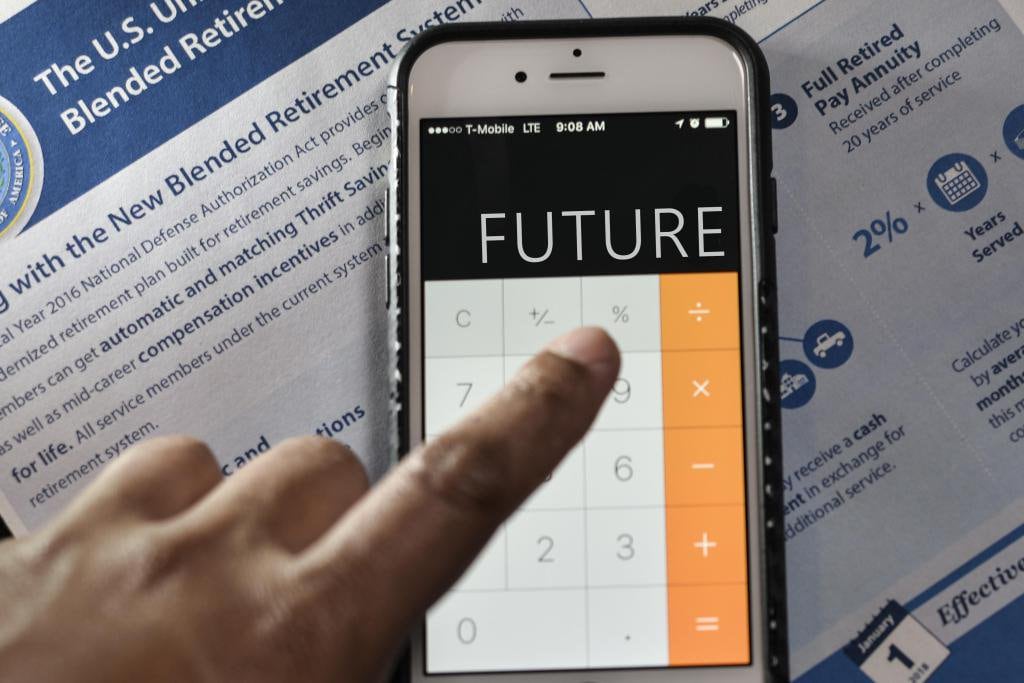The days of an automatic retirement payout after 20 years of service are winding down.
Starting this year, new soldiers joined the Army with a 401(k)-style retirement savings option, while soldiers with less than 12 years in service have a decision to make: Do they want to opt in to the new plan and start saving, or do they want the legacy option, which comes with a chance that they won’t serve a full 20 years?
Those soldiers, about 800,000 of them, both on active duty and in the reserve component, have until Dec. 31 to log on and make a selection. And though leadership says they don’t have a stake in which way soldiers go, they want to make sure that everyone makes an informed choice.
“I’m asking the chain of command to remind their soldiers that they have to make a choice, not to sway them either way," Sergeant Major of the Army Dan Dailey told Army Times. "Just so we can reassure ourselves that every soldier has been trained and reminded of the fact that there is a deadline on Dec. 31.”
The new retirement system, called the Blended Retirement System, replaces the traditional fixed payout, which at 20 years would give a retiring soldier about half of his or her base pay yearly. The new system lets soldiers save some of their own money, with the Army matching their deposits (up to 5 percent of their pay) and letting them walk away from the Army at any time with some money saved up.
If a soldier chooses BRS and still stays 20 years, the compensation could be comparable, but is more subject to stock market conditions, as the savings are invested.
“If you opt in and maximize the 5 percent that the government would match, depending on the interest rate over time, you would probably stand a pretty good chance to break even,” according to Larry Lock, the Army’s chief of compensation and entitlements.
Every post will have financial counselors to help soldiers figure out how to manage their savings, and they can roll that account over into an Individual Retirement Account when they leave the Army and continue to contribute to it.
The Army has had the lowest take rate for the BRS at about 20 percent, while the Marine Corps is the highest, with closer to 40 percent. There are plenty of theories about why that might be, but of note, the Marine Corps required every one of its troops to log into the personnel system and select “yes” or “no.”
They were able to do that, Lock said, because they have an integrated pay and personnel system with that level of functionality.
“The other services, to include the Navy, don’t have that kind of capability,” he added.
So instead, the Army set aside 2017 for mandatory training on the BRS, which has been 100 percent completed in the active Army and Army Reserve, but not completely in the National Guard.
“We spent a lot of time training and educating our soldiers,” Dailey said. “We have the highest training rate of the services.”
As for the BRS take rate, officials don’t want to speculate on the reasons. There was a surge in completed training at the end of last year, Dailey said, so it could be that soldiers are waiting until the last minute.
As to whether there’s a difference in the Army in terms of troops planning to stay 20-plus years, or if many are just not interested in a retirement savings plan, that’s not clear. Possibly related, though, is the Army’s historic retention rate.
“We are experiencing very high retention rates,” Dailey said. “This year, we’re already on glide path to probably finish out our retention mission by June.”
But whatever the reason for the low take rates, leadership wants to make sure that every soldier sits down, takes a look at their financial situation and makes a decision. It takes about 20 minutes to log on and complete the process.
“This is a big deal,” Dailey said. “This is their benefits.”
Meghann Myers is the Pentagon bureau chief at Military Times. She covers operations, policy, personnel, leadership and other issues affecting service members.





